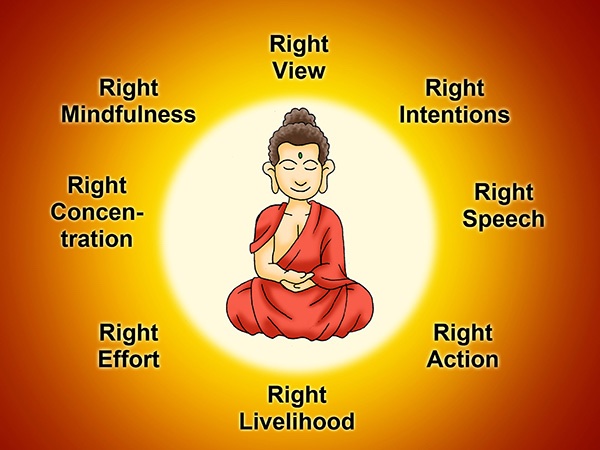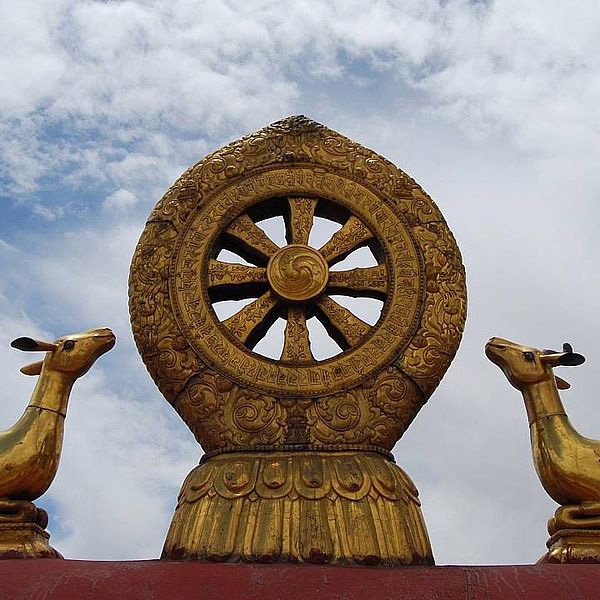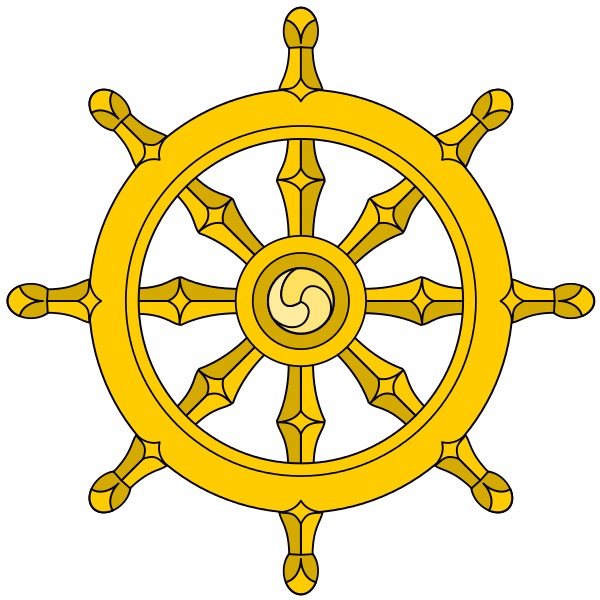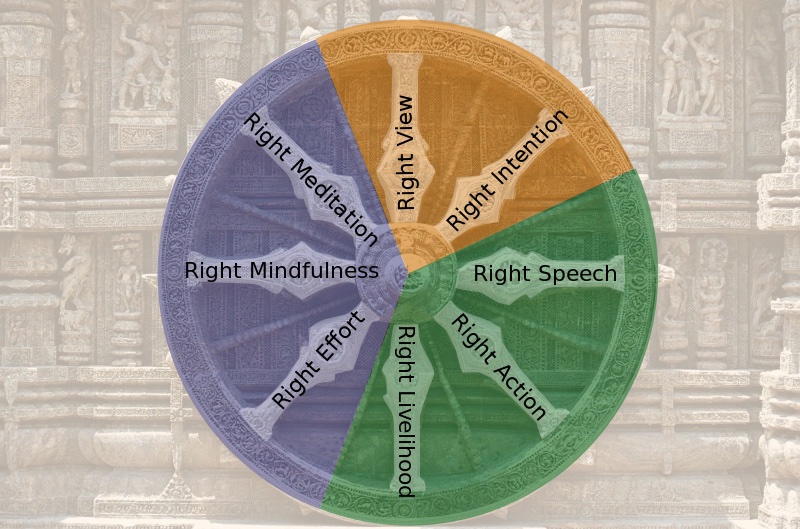The Noble Eightfold Path

The Noble Eightfold Path is an early summary of the path of Buddhist practices leading to liberation from samsara, the painful cycle of rebirth.
The Eightfold Path consists of eight practices: right view, right resolve, right speech, right conduct, right livelihood, right effort, right mindfulness, and right "samadhi" (meditative absorption or union). In the earliest Buddhism these practices started with insight (right view), culminating in dhyana/samadhi as the core soteriological practice. In later Buddhism insight (prajna) became the central soteriological instrument, leading to a different concept and structure of the path.
The Eightfold Path teaches that by restraining oneself, cultivating discipline, and practicing mindfulness and meditation, house-leavers (monks and nuns) attain nirvana and stop their craving, clinging and karmic accumulations, thereby ending their rebirth and suffering.
The Noble Eightfold Path is one of the principal teachings of Theravada Buddhism, leading to Arhatship. In the Theravada tradition, this path is also summarized as sila (morals), samadhi (meditation) and prajna (insight). In Mahayana Buddhism it is contrasted with the Bodhisattva path, which culminates in full Buddhahood.
In Buddhist symbolism, the Noble Eightfold Path is often represented by means of the dharma wheel (dharmachakra), whose eight spokes represent the eight elements of the path.
The Eightfold Path Origin
According to Vetter, the description of the Buddhist path may initially have been as simple as the term "the middle way". In time, this short description was elaborated, resulting in the description of the eightfold path. Vetter and Bucknell both note that longer descriptions of "the path" can be found, which can be condensed into the eightfold path.
The Eight Divisions


The Dharma wheel, often used to represent the Noble Eightfold Path

Eight-fold path illustrated in a dharma wheel.
- Right View: our actions have consequences; death is not the end, and our actions and beliefs have also consequences after death; the Buddha followed and taught a successful path out of this world and the other world (heaven and underworld/hell) Later on, right view came to explicitly include karma and rebirth, and the importance of the Four Noble Truths, when "insight" became central to Buddhist soteriology.
- Right Resolve: the giving up home and adopting the life of a religious mendicant in order to follow the path; this concept, states Harvey, aims at peaceful renunciation, into an environment of non-sensuality, non-ill-will (to loving kindness), away from cruelty (to compassion). Such an environment aids contemplation of impermanence, suffering, and non-Self.
- Right Speech: no lying, no rude speech, no telling one person what another says about him, speaking that which leads to salvation;
- Right Conduct: no killing or injuring, no taking what is not given, no sexual acts.
- Right Livelihood: beg to feed, only possessing what is essential to sustain life;
- Right Effort: guard against sensual thoughts; this concept, states Harvey, aims at preventing unwholesome states that disrupt meditation.
- Right Mindfulness: never be absent minded, being conscious of what one is doing; this, states Harvey, encourages the mindfulness about impermanence of body, feeling and mind, as well as to experience the five aggregates (skandhas), the five hindrances, the four True Realities and seven factors of awakening.
- Right samadhi: practicing four stages of meditation (dhyāna) culminating into unification of the mind.
Threefold division
The Noble Eightfold Path is sometimes divided into three basic divisions, as follows:
| Division | Eightfold Path factors |
| Moral virtue (Sanskrit: śīla, Pāli: sīla) | 3. Right speech 4. Right action 5. Right livelihood |
| Meditation (Sanskrit and Pāli: samādhi) | 6. Right effort 7. Right mindfulness 8. Right concentration |
| Insight, wisdom (Sanskrit: prajñā, Pāli: paññā) | 1. Right view 2. Right resolve |
This order is a later development, when discriminating insight (prajna) became central to Buddhist soteriology, and came to be regarded as the culmination of the Buddhist path. Yet, the first seven practices as requisites for right samadhi. This may have been the original soteriological practice in early Buddhism.
To learn more attend Master Choa Kok Sui’s Inner Teachings of Buddhism Revealed course.
